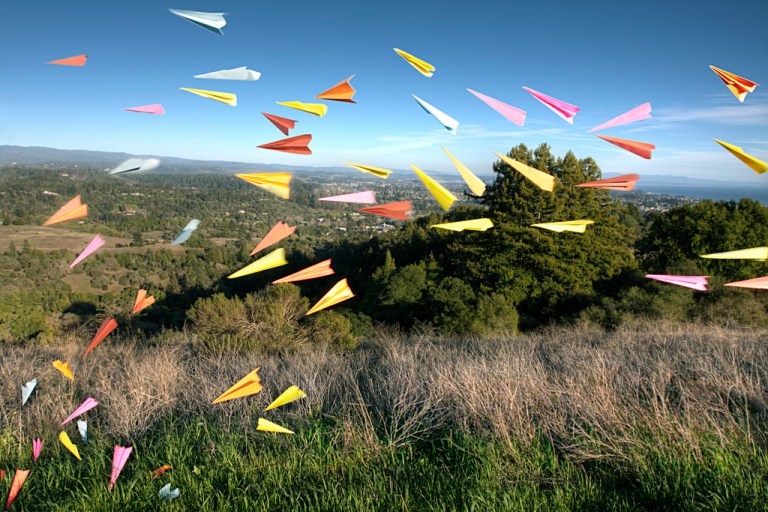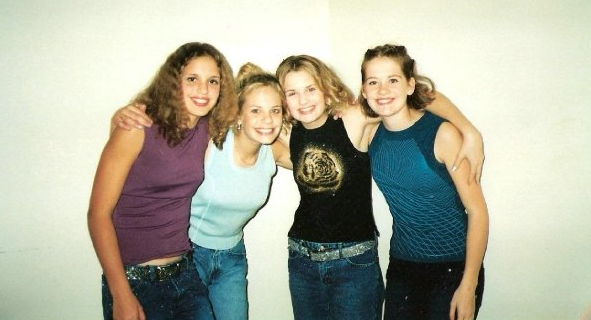A Complete Idiot’s Guide To Flannel
It’s a well-known fact that not all flannel is plaid, not all plaid is flannel and all flannel comes from the Great North American Flannimal. What’s not as well known is the fascinating history behind this largely independent beast. Sometimes called “the world’s oldest fashion victim,” flannimal populations have long suffered from poaching for their…

It’s a well-known fact that not all flannel is plaid, not all plaid is flannel and all flannel comes from the Great North American Flannimal. What’s not as well known is the fascinating history behind this largely independent beast. Sometimes called “the world’s oldest fashion victim,” flannimal populations have long suffered from poaching for their soft plaid, or crisscross patterned, fur. Flannimals have been heavily hunted, particularly in the past hundred years, with a record high during the 1990s Grunge movement.
These popular, herbivorous (raw foods vegan), members of the deer family are not native to North America. Scientists assume the species originated in Scotland and then crossed the Atlantic with early explorers. They were first hunted when Leon Leonwood Bean, of mail-order catalog fame, instituted the practice in the late 1800s. According to legend, L.L. Bean fought a flannimal to the death for his first pair of fisherman’s boots. This account is often mentioned as the origin of his famous quote: “If not for flannimals, we’d be in tough shirt.”
Flannimals pepper the country, with the major populations in New England, the Midwest plains, the Pacific Coastal region and the most disturbing areas of Brooklyn. Recently, environmentalists have upgraded flannimals’ status to “endangered”. In a new trend, their midnight obsidian horns are being ground into eyeglass frames, which is somewhat ironic considering flannimals have terrible vision. Some might say that the flannimal situation is flying dangerously out of control. But to avoid confusion, it should be noted that they are land-bound mammals that cannot fly, though they do tend to veer out of control because of their nearsightedness. Their lack of flight and poor eyesight makes them particularly easy prey — especially combined with the fact that it is impossible to camouflage their vibrant multicolored pelts. They are covered in vivid plaid flannel, I can’t stress that enough.
Buffalo Plaid
A common misconception is that this large-checked, often red-and-black, plaid is made by buffalos for buffalos. In reality, buffalos have transitioned out of the textile industry entirely, preferring to focus on their wild wing empire. Buffalo plaid gets its name from the City of Buffalo, N.Y. That is where the flannel was first used as a portable checkerboard, so people in Buffalo would finally have something to do.
Black Watch
The Black Watch design is a type of plaid called a tartan. A tartan is a fabric with a completely symmetrical pattern repeating across the length and width; it is associated with clans of the Scottish Highlands. The Black Watch specifically, is a legendary militaristic dark blue-and-green tartan that is now best used on thin ties for thin men. See: Adam Scott as Ben Wyatt
Glen plaid
Named after the creepy kid Glen from Mad Men, this very small checked plaid will haunt your dreams.
Royal Stewart
Another deep-rooted tartan, this red tartan with dark blue, yellow and white lines is popular in the punk rock community and also the personal tartan of Queen Elizabeth. It is named for Rod Stewart, Her Majesty’s favorite Scottish terrier who possesses a strikingly similar haircut to Rod Stewart the singer-songwriter and human.
Gingham
During the 1990s, The GAP answered the age-old question of how picnics can be further integrated into non-picnic settings.
Burberry
This is a plaid fabric that was the failed first product of Thomas Blackberry founder of the popular mobile device company. He attempted to get people to use the tan and red plaid fabric as a flag to signal messages to each other from afar — a foreshadowing of his future in communication. The problem was that senders kept trying to use the Burberry to send the message: “I’m awesome.” However, it did not work properly and the recipients kept receiving their message as “I’m trying too hard.”
Tattersall
A check or plaid pattern woven into cloth composed of regularly spaced thin even vertical warp stripes, repeated horizontally in the weft, thereby forming squares. Yup, in the weft, because weaving isn’t confusing enough, so they added Old English into the mix.
Madras
First made innocently in the Indian city of Chennai, madras took an upsetting turn in the 1960s. Madras undoing came from its association with a disturbing religious sect called “Preps.” These madras-loving preps were first depicted as “Socs,” the total a-holes in S.E. Hinton’s 1965 roman à clef, The Outsiders. This fabric Frankenstein is the patchwork product of hubris, insanity and lightweight cotton. In the 1980s, an activist group formed using the acronym M.A.D.R.A.S, which stands for Moms Against Douches Running Around (in) Shorts. They have not been successful.
Houndstooth
This second cousin to the Plaid family hails from the Scottish lowlands. The broken checked usually black-and-white pattern is popular with chefs, ghouls, and other dementos who aren’t completely freaked out by tessellations. ![]()




